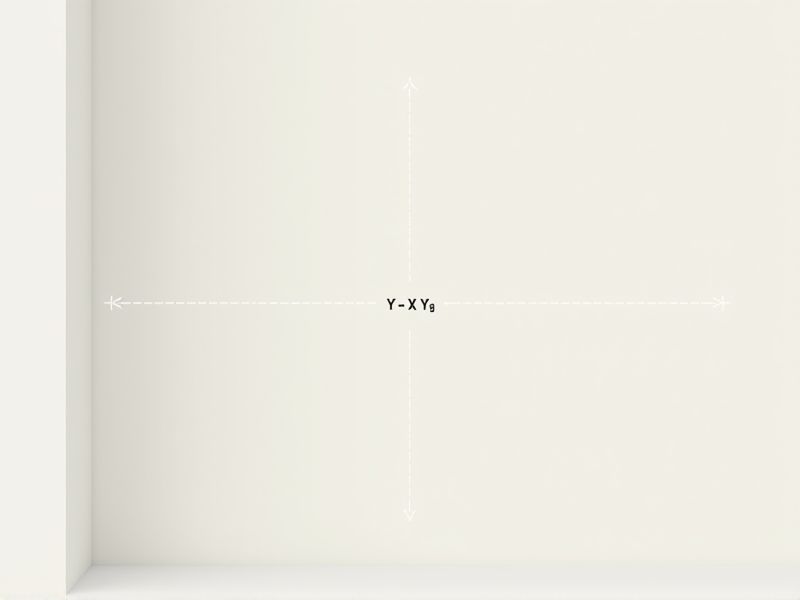
Drywall panels, also known as gypsum boards, are most commonly found in 4-foot by 8-foot sheets, making them easy to handle and fit through most residential doorways. These panels are also available in lengths of 10, 12, or even 14 feet for projects requiring fewer seams. Standard drywall thicknesses include 1/2-inch for most walls and 5/8-inch for increased fire resistance or soundproofing, while 1/4-inch and 3/8-inch options are used for curved surfaces or repairs. Choosing the correct size and thickness can make installation faster and improve the finished look of your project.
Thickness Options: 1/4", 3/8", 1/2", 5/8
Drywall comes in various thickness options, specifically 1/4", 3/8", 1/2", and 5/8", each serving unique purposes in construction and remodeling. The 1/4" thickness is often used for curved surfaces, while the 3/8" is suitable for repairs and light-duty applications. The 1/2" thickness is the most common choice for interior walls and ceilings due to its balance of strength and weight. For areas requiring fire resistance or soundproofing, the 5/8" drywall is recommended, offering enhanced durability and performance.
Common Size: 4X8 Feet
The standard size of drywall commonly used in residential construction is 4x8 feet, which equates to 32 square feet per sheet. This dimension makes it easier to handle and install in typical wall configurations. You will often find drywall in varying thicknesses, with 1/2-inch being the most prevalent for standard interior walls. For specialized applications, 5/8-inch thick drywall is frequently used for fire-resistance in commercial buildings.
Larger Sheets: 4X12, 4X10
Standard drywall sizes include larger sheets measuring 4 by 12 feet and 4 by 10 feet, which are popular in both residential and commercial construction. These dimensions facilitate quicker installation and reduce the number of seams, promoting a smoother finished surface. Using larger sheets can also minimize waste, making your project more cost-effective. When planning your drywall needs, consider how these sizes can impact material efficiency and labor costs in your construction projects.
Lightweight Variations Available
Lightweight drywall panels, typically weighing around 1.5 to 1.8 pounds per square foot, provide an efficient alternative to traditional materials. These panels are designed for easier handling and quicker installation, reducing labor costs by up to 30%. With enhanced strength and durability, lightweight drywall also offers improved sound insulation and fire resistance, ensuring safety and comfort in your spaces. For your projects, choosing lightweight drywall can result in better performance without compromising structural integrity or work efficiency.
Fire-Resistant Types
Fire-resistant drywall, often designated as Type X, contains additives that enhance its resistance to fire, typically resisting flames for up to 90 minutes. In residential and commercial buildings, it is commonly used in areas such as garages and multi-family housing due to its efficacy in preventing the spread of fire. The thickness of this drywall generally measures 5/8 inch, providing a substantial barrier against fire hazards. By incorporating fire-resistant drywall in your construction, you significantly improve safety measures and may even benefit from lower insurance premiums.
Soundproofing Options
Soundproofing is a critical factor when selecting drywall, with options ranging from standard to specialized sheets designed to minimize sound transmission. Standard drywall typically offers Sound Transmission Class (STC) ratings of 30 to 40, while soundproofing drywall can achieve STC ratings as high as 70 or more. For optimal results, you can consider adding resilient channels or acoustic caulk, which further enhance the soundproofing capabilities of your drywall installation. Choosing the right soundproofing materials ensures a quieter environment, particularly in residential or commercial spaces where noise reduction is essential.
Moisture-Resistant Options
Moisture-resistant drywall, often referred to as green board, is specifically designed to withstand high humidity levels, making it suitable for areas such as bathrooms and kitchens. This type of drywall features a moisture-repellent core and is typically impregnated with non-combustible materials, achieving enhanced durability and longevity. When installing moisture-resistant drywall, it's essential to install adequate ventilation in the workspace to further prevent mold and mildew growth, safeguarding your home's air quality. With a standard thickness of 1/2 inch, moisture-resistant drywall provides a reliable barrier against moisture while maintaining structural integrity.
Tapered Edges For Joint Finishing
Standard drywall typically features tapered edges designed specifically for efficient joint finishing. These tapered edges create a recess that allows for even application of joint compound, ensuring a smooth and seamless surface after sanding. Most drywall sheets come in sizes like 4x8 feet or 4x12 feet, with thicknesses ranging from 1/4 inch to 5/8 inch, ideal for various construction and renovation projects. This design enhances the overall durability and aesthetic quality of your walls, making it a popular choice among builders and interior designers.
Greenboard For Bathrooms
Greenboard drywall, also known as moisture-resistant drywall, is specifically designed for high-humidity environments like bathrooms. It features a green paper exterior that provides enhanced protection against moisture damage, making it an excellent choice for areas prone to dampness. For optimal results, ensure that the Greenboard is installed with a minimum spacing of 16 inches on center, and use appropriate joint compound to maintain its moisture-resistance properties. Installing it within a well-ventilated space can further mitigate potential mold growth, ensuring your bathroom remains a safe and functional area for at least 20 years.
Blueboard For Plaster Veneer
Blueboard, specifically designed for plaster veneer applications, has a unique moisture-resistant quality that makes it an optimal choice for interior walls. This type of drywall typically measures 1/2 inch in thickness and offers superior bonding characteristics for plaster finishes, enhancing durability and finish quality. It is essential to install Blueboard with the paper side facing outwards to ensure proper adhesion and performance. When using Blueboard, consider the recommended installation guidelines to maximize the effectiveness of your plaster veneer and achieve a smooth, professional appearance.
